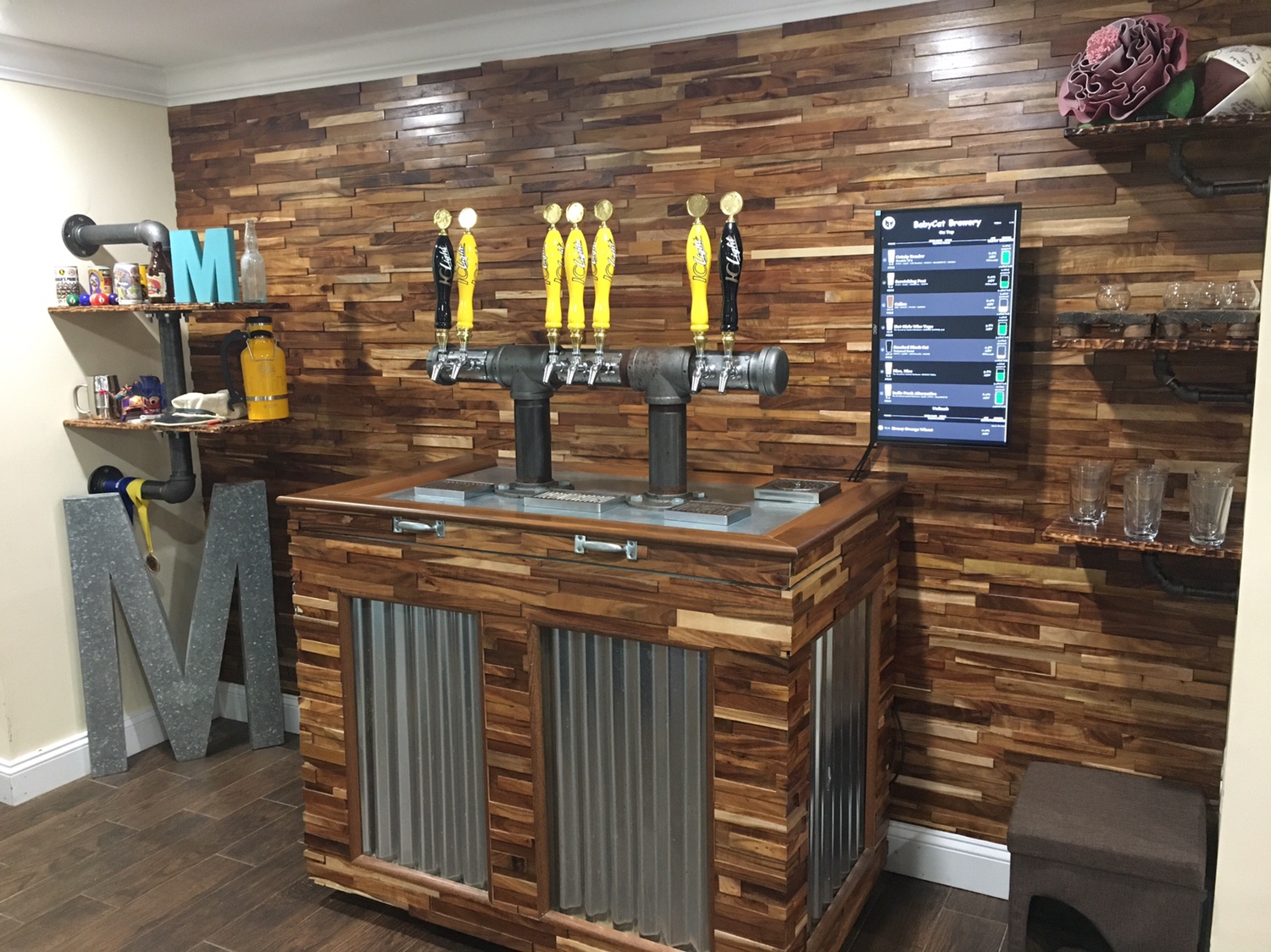I have a model 3B+, Rpints version from RandR+, 2 Swissflow and Arduino Uno(with breadboard) connected with USB.
I am now stucked getting the flowmeters to work properly and hope for some help. I have been reading and trying now for so many hours.
I have done this:
- Uploaded raspberrypints.ino file through serial port:ttyACM0 and board:Arduino Uno.This was done successfully (done uploading).
In the .ino file I only changed "unsigned int numSensors = 4;" to "unsigned int numSensors = 2;". Nothing else
- I have changed config.py to "config['flowmon.port'] = '/dev/ttyACM0'", "config['flowmon.debug' ] = True" and "config['flowmon.debug' ] = True"
- sudo /etc/init.d/flowmon start is successful and ps aux | grep FlowMonitor.py gives:
pi 2324 0.0 0.0 4368 552 pts/0 S+ 22:48 0:00 grep --color=auto FlowMonitor.py
Doesn't reply what it should?
- Connected to pin 2 and 7 on the Arduino and put flowpin 2 and 7 on admin page.
- rpints.log give me this message. What is the problem here?
"2019-09-26 22:13:51 RPINTS: valve update: RPU:VALVE:0=0
2019-09-26 22:13:51 RPINTS: valve update: RPU:VALVE:1=0
2019-09-26 22:13:51 RPINTS: Could not import RFID Reader, RFID disabled. Assuming SPI not installed/configured
2019-09-26 22:13:53 RPINTS: starting setup...
2019-09-26 22:13:53 RPINTS: resetting alamode to try to force it to listen to us...
2019-09-26 22:13:54 RPINTS: giving it a short break to wake up again...
2019-09-26 22:13:56 RPINTS: reflashing alamode via:
/usr/share/arduino/hardware/tools/avrdude -C/usr/share/arduino/hardware/tools/avrdude.conf -patmega328p -calamode -P/dev/ttyACM0 -b115200 -D -Uflash:w:/var/www/html//arduino/raspberrypints/raspberrypints.cpp.hex:i
RPINTS: reflashing alamode failed, moving on anyways, error was: Command '/usr/share/arduino/hardware/tools/avrdude -C/usr/share/arduino/hardware/tools/avrdude.conf -patmega328p -calamode -P/dev/ttyACM0 -b115200 -D -Uflash:w:/var/www/html//arduino/raspberrypints/raspberrypints.cpp.hex:i' returned non-zero exit status 1
2019-09-26 22:14:02 RPINTS:
2019-09-26 22:14:02 RPINTS: starting WS server
2019-09-26 22:14:02 RPINTS: starting tap flow meters...
2019-09-26 22:14:02 RPINTS: resetting alamode
2019-09-26 22:14:02 RPINTS: starting command server
2019-09-26 22:14:02 RPINTS: starting fan control
2019-09-26 22:14:02 RPINTS: Fan Control fanControl1 is Running
2019-09-26 22:14:02 RPINTS: Not Configured to run Fan
2019-09-26 22:14:03 RPINTS: waiting for alamode to come alive
I am now stucked getting the flowmeters to work properly and hope for some help. I have been reading and trying now for so many hours.
I have done this:
- Uploaded raspberrypints.ino file through serial port:ttyACM0 and board:Arduino Uno.This was done successfully (done uploading).
In the .ino file I only changed "unsigned int numSensors = 4;" to "unsigned int numSensors = 2;". Nothing else
- I have changed config.py to "config['flowmon.port'] = '/dev/ttyACM0'", "config['flowmon.debug' ] = True" and "config['flowmon.debug' ] = True"
- sudo /etc/init.d/flowmon start is successful and ps aux | grep FlowMonitor.py gives:
pi 2324 0.0 0.0 4368 552 pts/0 S+ 22:48 0:00 grep --color=auto FlowMonitor.py
Doesn't reply what it should?
- Connected to pin 2 and 7 on the Arduino and put flowpin 2 and 7 on admin page.
- rpints.log give me this message. What is the problem here?
"2019-09-26 22:13:51 RPINTS: valve update: RPU:VALVE:0=0
2019-09-26 22:13:51 RPINTS: valve update: RPU:VALVE:1=0
2019-09-26 22:13:51 RPINTS: Could not import RFID Reader, RFID disabled. Assuming SPI not installed/configured
2019-09-26 22:13:53 RPINTS: starting setup...
2019-09-26 22:13:53 RPINTS: resetting alamode to try to force it to listen to us...
2019-09-26 22:13:54 RPINTS: giving it a short break to wake up again...
2019-09-26 22:13:56 RPINTS: reflashing alamode via:
/usr/share/arduino/hardware/tools/avrdude -C/usr/share/arduino/hardware/tools/avrdude.conf -patmega328p -calamode -P/dev/ttyACM0 -b115200 -D -Uflash:w:/var/www/html//arduino/raspberrypints/raspberrypints.cpp.hex:i
RPINTS: reflashing alamode failed, moving on anyways, error was: Command '/usr/share/arduino/hardware/tools/avrdude -C/usr/share/arduino/hardware/tools/avrdude.conf -patmega328p -calamode -P/dev/ttyACM0 -b115200 -D -Uflash:w:/var/www/html//arduino/raspberrypints/raspberrypints.cpp.hex:i' returned non-zero exit status 1
2019-09-26 22:14:02 RPINTS:
2019-09-26 22:14:02 RPINTS: starting WS server
2019-09-26 22:14:02 RPINTS: starting tap flow meters...
2019-09-26 22:14:02 RPINTS: resetting alamode
2019-09-26 22:14:02 RPINTS: starting command server
2019-09-26 22:14:02 RPINTS: starting fan control
2019-09-26 22:14:02 RPINTS: Fan Control fanControl1 is Running
2019-09-26 22:14:02 RPINTS: Not Configured to run Fan
2019-09-26 22:14:03 RPINTS: waiting for alamode to come alive












































![Craft A Brew - Safale S-04 Dry Yeast - Fermentis - English Ale Dry Yeast - For English and American Ales and Hard Apple Ciders - Ingredients for Home Brewing - Beer Making Supplies - [1 Pack]](https://m.media-amazon.com/images/I/41fVGNh6JfL._SL500_.jpg)














